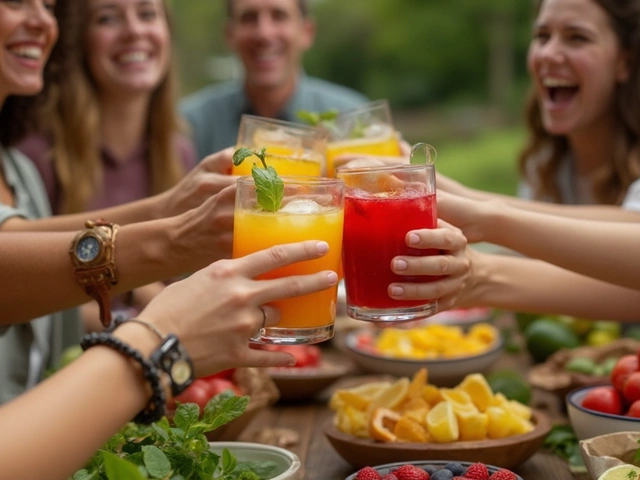Unhealthy Drinks – What They Do to Your Body and How to Cut Them
Ever wonder why you feel a crash after a can of soda or a night of heavy drinking? The answer isn’t just a bad habit; it’s chemistry. Sugary sodas, high‑calorie cocktails, and energy shots pack calories, sugar, and stimulants that overload your system. Those drinks can spike blood sugar, raise blood pressure, and add unwanted pounds without you even noticing. The good news? You don’t have to quit all pleasure – you just need smarter swaps.
Why Some Drinks Are Bad for You
Sugar is the main villain in most unhealthy drinks. A 12‑ounce soda can hold up to 40 grams of sugar – that’s more than the daily limit the World Health Organization recommends. When you sip that sweet fizz, your liver works overtime to process the excess, which can lead to fatty liver disease over time. Energy drinks add caffeine and taurine, giving a short‑term buzz but also causing jitters, heart palpitations, and sleep disruption. Alcohol, especially when consumed in large amounts, damages the liver, raises triglycerides, and weakens the immune system. All these drinks are also calorie‑dense, meaning you consume a lot of energy without feeling full, which can crowd out nutritious foods.
Easy Swaps for a Healthier Sip
Switching doesn’t mean you lose flavor. Try sparkling water with a splash of fresh fruit – it gives you the fizz without the sugar. For a caffeine lift, brew a strong cup of black coffee and add a dash of cinnamon instead of sugar. If you crave a cocktail vibe, mix soda water with a splash of 100% juice and a sprig of herbs; it feels fancy and stays low‑calorie. When it comes to alcohol, set a limit (like two drinks) and choose clear spirits with a squeeze of lime, which have fewer congeners than dark liquors. Pair your drink with a protein snack – it slows absorption and keeps you satisfied.
Reading labels can save you from hidden sugars. Look for terms like “high‑fructose corn syrup,” “sucrose,” or “glucose” near the top of the ingredient list – those are red flags. Some drinks market themselves as “low‑fat” or “diet” but still contain artificial sweeteners that may affect gut health. Opt for natural flavors whenever possible and keep an eye on serving sizes; a “small” soda at a fast‑food place is often larger than you think.
Making the change is a habit game. Keep a water bottle handy, set reminders to drink water throughout the day, and gradually reduce the amount of sugary drinks you have. If you’re used to a soda with lunch, replace it with iced green tea – it gives you a gentle caffeine boost and antioxidants. Over time, your taste buds will adjust, and you’ll notice less cravings for the sweet, sticky stuff. Remember, the goal isn’t perfection; it’s about swapping out the worst drinks for options that keep you feeling good and energized.
Ever wondered which non-alcoholic drink is worst for your health? This article breaks down what makes certain mocktails and soft drinks a real problem for your body. You'll learn which ingredients to watch for, why some drinks are basically sugar bombs, and simple swaps you can actually enjoy. Whether you make drinks at home or grab them to go, this guide keeps things real and super practical.
View Details

